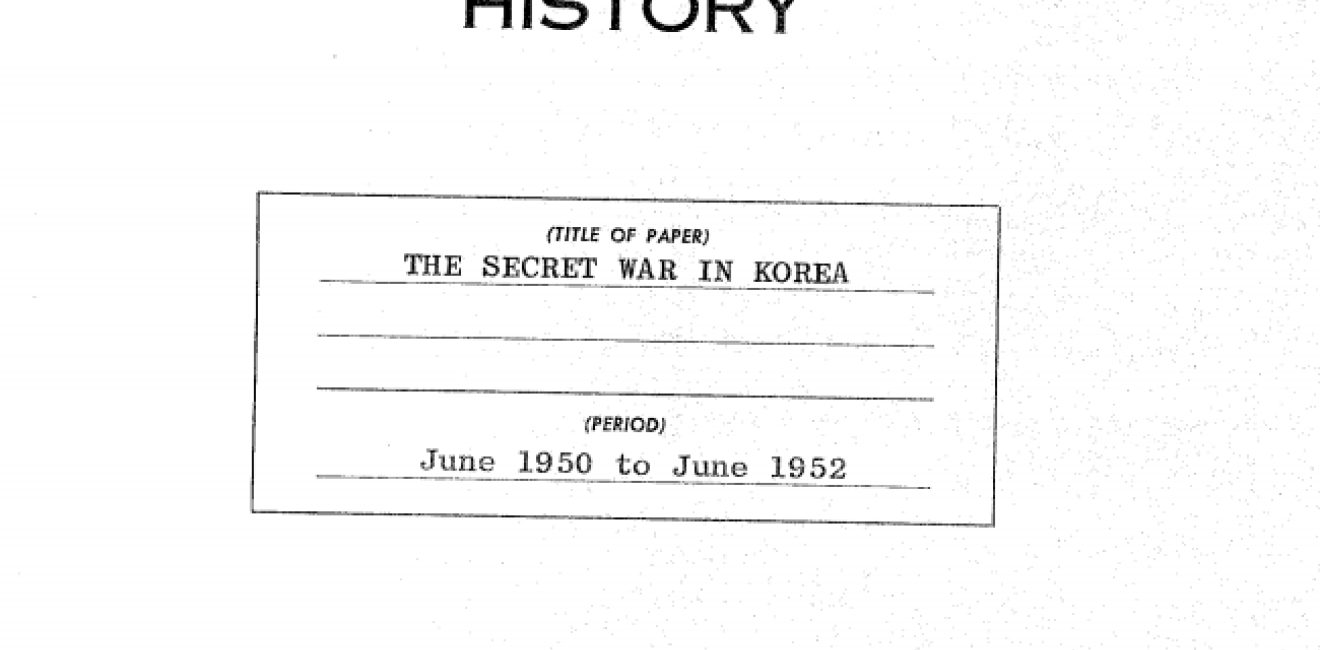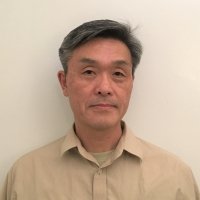Korean War Special Operations
The Korean War prompted the US military establishment to realize that special operations capabilities cannot be built on a moment’s notice. They had to be maintained and nurtured in peacetime.

A blog of the History and Public Policy Program
The Korean War prompted the US military establishment to realize that special operations capabilities cannot be built on a moment’s notice. They had to be maintained and nurtured in peacetime.

Special operations is a relatively neglected dimension of Korean War operations.[1] One reason for this is the lack of sources, especially for North Korean and Chinese operations. A more important reason is the generally accepted conclusion that special operations, by both sides, did not have an appreciable impact on the conduct, course and outcome of the war.
As we have not yet found a way to overcome the lack of sources for the Chinese-North Korean story, our interest is focused on the UN, which was largely an American story with significant South Korean content.
Special operations are military actions that are usually conducted behind enemy lines by specially trained regular forces or indigenous forces directed or led by regular forces operating covertly or clandestinely in support of the larger war effort. Raids, sabotage, intelligence collection, prisoner snatch, deception, and psychological operations are some examples. While all of these were conducted in the Korean War, the most prominent were psychological (broadcasts and leaflets) and partisan (guerilla) operations.
The relative neglect in the coverage of partisan operations is curious as it was large in scale and thus potentially played an important operational, and even political, role. An estimated 40,000 partisans – trained, supported, and directed by various US military commands and the Central Intelligence Agency (CIA) – conducted hundreds of operations in North Korea. Thousands were killed and, by all accounts, inflicted a heavy toll on Chinese and North Korean forces while tying down tens of thousands of soldiers.
Hundreds of other operations were conducted by American, British and Korean regular forces as well as by the fledgling CIA. Other operations involved sending Korean civilian agents including old men, women and children, over land through the frontlines or parachuted deeper into enemy territory to collect intelligence. One well known and rather a spectacular mission in March 1951 involved infiltrating General MacArthur’s health officer, Brigadier General Crawford Sams, into the Wonsan area to “snatch” and examine corpses from a Chinese field hospital to confirm or deny rumors of a plague epidemic. The mission was successful and Sams confirmed that there was no plague.[2]
We may accept the conclusion that special operations in the end was relatively irrelevant to the course and outcome of the Korean War and place blame for this not to the competence and courage of the people on the ground but to the chaotic and uncoordinated organization of units and planning and execution of operations. In short, lack of higher-level competence and leadership.[3] But there is another dimension to the story, one that goes beyond the war and to the present. The fragmented, disjointed, uncoordinated, and often unsuccessful special operations in the Korean War were the result of unpreparedness and the ad-hoc and improvisational way that special operations were organized and executed. This situation came about due to the almost wholesale dissolution of these capabilities in the massive post-World War II demobilization. The North Korean invasion was a wake-up call to re-establish this capability and do so as quickly as possible to help stem the catastrophe that was unfolding in the summer of 1950.
The organization and conduct of special operations matured especially after the frontline stabilized in the early summer of 1951. But the improvements were marginal at best. What did change was the mindset of the US military establishment that special operations capabilities cannot be built on a moment’s notice and had to be maintained and nurtured in peacetime so they are ready when needed.[4] These capabilities became part of the American arsenal in the Cold War. The Korean War lessons were applied to the Vietnam War, where military and CIA special operations became a major component of US policy and strategy. The creation of the US Special Operations Command in 1987, placing special operations on par with other forms of warfare, was the penultimate outcome of a process that was sparked by the Korean War.[5] Similarly, the maturation and use of CIA’s paramilitary capabilities during and after the Cold War can be traced to its “baptism of fire” in the Korean War, coming so soon after its creation in 1947.
The work that comes closest to providing a cohesive and comprehensive overview of the fragmented and complex history of special operations in the Korean War is Michael E. Haas’s In the Devil’s Shadow: U.N. Special Operations During the Korean War. Its main weakness is that it was published 20 years ago. David Gray’s historiographical essay on Korean War special operations updates some of the new US sources that have become available.[6] Both works lack South Korean sources, an important lacuna since most of the on the ground operators were Korean. Fortunately, Korean and additional US sources are available. The Korean sources are not necessarily new but have not been used in English scholarship.
The two most relevant new US sources come from the CIA FOIA program and the publications of the Office of Command Historian of the US Army Special Operations Command. CIA releases are still incomplete at best but two documents stand out, chapters I and II of Organizational History of Central Intelligence Agency, 1950-1953, and Clandestine Services History: The Secret War in Korea, June 1950-June 1952, which is useful even if heavily redacted.
In addition to the unreleased portions of these histories, the following CIA histories related to the Korean War remain classified and are under FOIA requests from Muckrock,[7] They show how much of the story still remains to be told.
- History of Maritime Activities Korea (1950-1956)
- The Origins of CIA’s Clandestine Organization in the Far East, 1945-1952
- The Origins of CIA’s Clandestine Organization in the Far East, 1952-1956
- The Chinese Third Force Project, 1950-1953
-The North Asia Command, 1952-1956
-The Third Force Effort, 1949-1953
-CIA in Korea, 1946-1965
-Infiltration and Resupply of Agents in North Korea, 1952-1953
- History of Technical Services Division – Far East (Volumes I-X)
More accessible sources are the publications of the Command Historian’s Office of the US Army Special Operations Command which acts as the archive for US Army and OSS history. Its journal, Veritas, ran a 7-issue special from 2010 to 2013 covering the history of special operations in the Korean War. This is an exceptional source not only for the depth of the articles but the detailed citations that lead to many previously unavailable primary sources. All issues of Veritas are available online.[8]
Among Korean sources are a history by the South Korean Ministry of National Defense’s Institute for Military History (IMH), memoirs by key Korean participants, and a study tracing the geographic and ideological origins of Koreans who volunteered to be partisans. IMH’s History of Unconventional Warfare in the Korean War (한국전쟁의 유격전사, IMH, 2003) is the only Korean language history of Korean War special operations. It notes that primary Korean sources are almost non-existent and thus much of the history relied on US sources and memoirs of surviving participants.
Three noteworthy memoirs stand-out as valuable sources providing a Korean perspective. The Secret History of the KLO was written by Yi Ch’ang-gŏn, a veteran of the Eighth US Army partisan force known as the Korean Liaison Office (KLO), as part of an effort to obtain official recognition for KLO veterans as veterans of the South Korean armed forces, a distinction that has yet be granted by the government. General MacArthur and Colonel Kye In-ju is a memoir by a South Korean officer, Colonel Kye In-ju, who played a leading role in Far Eastern Command’s (FEC) special operations including a daring mission in support of the Inchon landing. Another insider memoir, Testimony from the Canon Organization, is an older work published in Japan by South Korean Major Yŏn Chŏng who was also intimately involved in FEC special operations along with Colonel Kye. Maj. Yŏn accompanied General Sams in the Wonsan infiltration mentioned earlier. He was also a key member of the Canon Organization (appointed there by President Syngman Rhee), the Tokyo-based secretive intelligence operation set up by General MacArthur’s intelligence chief Major General Charles Willoughby to conduct clandestine operations throughout FEC’s area of operation.[9]
Yi Wan-bŏm’s 2010 study on the White Shirt Society’s connection to KLO provides a wealth of primary and secondary sources that trace the origin of the White Shirt Society, which was organized in November 1945 by anti-communist northern Koreans who moved south to escape the Soviet occupation. Yi traces its political terroristic activities and how it became the foundation for the KLO after the North Korean invasion.[10]
[1] This remains true for the most recent ones, e.g. Jager’s Brothers At War and Allan Millet’s two volumes in his not yet completed trilogy, The War for Korea: A House Burning, 1945-1950 (University Press of Kansas, 2005) and The War for Korea: They Came From the North, 1950-1951 (University Press of Kansas, 2010).
[2] Jager, Brothers at War, 242-244; William B. Breuer, Shadow Warriors: The Covert War in Korea (Wiley, 1996), 131-135. See also Tessa Morris-Suzuki, “The United States, Japan and the Undercover War in Korea,” In Tessa Morris-Suzuki, ed. The Korea War in Asia: A Hidden History (Rowman &Littlefield, 2018), 181-183.
[3] Michael E. Haas’s In the Devil’s Shadow: U.N. Special Operations During the Korean War (Naval Institute Press, 2000) 207-212.
[4] Robert P. Wettemann, “The Price of Stabilization,” Veritas 6.1 (2010) 116-120.
[5] David Gray, in his historiographical overview of Korean War special operations, observed that “The UNC special operations effort was not entirely in vain…These capabilities would play a greater role in the counterinsurgency era of the 1960s and provided the rationale for the founding of a unified U.S. Special Operations Command…” “Chapter 16: Special Operations,” in Matray and Boose, eds, Ashgate Research Companion to the Korean War, 224.
[6] Michael E. Haas’s In the Devil’s Shadow: U.N. Special Operations During the Korean War (Naval Institute Press, 2000); David Gray, “Chapter 16: Special Operations,” in Matray and Boose, eds, Ashgate Research Companion to the Korean War, 213-226.
[7] From the Muckrock website, https://www.muckrock.com/. MuckRock is a non-profit, collaborative news site that brings together journalists, researchers, activists, and regular citizens to request, analyze, and share government documents, making politics more transparent and democracies more informed. One of its major project is to get CIA documents declassified (https://www.muckrock.com/project/declassifying-cias-internal-histories-240/).
[8] The Korean War special issues are 6.1 to 9.1. Korean War related articles are also in issues 1.2, 2.2, 2.4, 3.1, 3.3, 3.4, 5.3, 5.4, 10.1, 12.1, and 13.1. https://arsof-history.org/veritas.html#v1n2
[9] Yi Ch’ang-gŏn, The Secret History of the KLO [KLO의 한국전 비사] (Seoul: Jisŏngsa, 2005). Kye In-ju, General MacArthur and Colonel Kye In-ju [맥아더장군과 계인주대령] (Seoul: Tain media, 1999). Yon Yan (延禎 연정), Testimony from the Canon Organization [Kyanon kikan kara no shogen] (Tokyo: Bancho shobo, 1973). Tessa Morris-Suzuki wrote a two-piece article on the Canon organization: "Democracy's Porous Borders: Espionage, Smuggling and the Making of Japan's Transwar Regime (Part 1)," The Asia-Pacific Journal, Vol. 12, Issue 40, No. 4, October 6, 2014 (https://apjjf.org/-Tessa-Morris_Suzuki/4198); "Democracy's Porous Borders: Espionage, Smuggling and the Making of Japan's Transwar Regime (Part 2)," The Asia-Pacific Journal, Vol. 12, Issue 41, No. 2, October 13, 2014 (https://apjjf.org/-Tessa-Morris_Suzuki/4201).
[10] Yi Wan-bŏm, “The White Shirt Society and KLO: The Origins of South Korean Intelligence Activities Against North Korea, 1945-1953 (백의사와 KLO의 활동을 통해서 본 남한 대북 정보활동의 원류, 1945-1953), Kukka chŏngbo yŏngu 3.1 (August 2010), 47-82. http://www.kanis.or.kr/sample/board_view.php?bbs_id=magazine_search&kbbs_doc_num=31&page=11&searchtype=&searchword=



A leader in making key foreign policy records accessible and fostering informed scholarship, analysis, and discussion on international affairs, past and present. Read more


The North Korea International Documentation Project serves as an informational clearinghouse on North Korea for the scholarly and policymaking communities, disseminating documents on the DPRK from its former communist allies that provide valuable insight into the actions and nature of the North Korean state. Read more


The Cold War International History Project supports the full and prompt release of historical materials by governments on all sides of the Cold War. Read more



